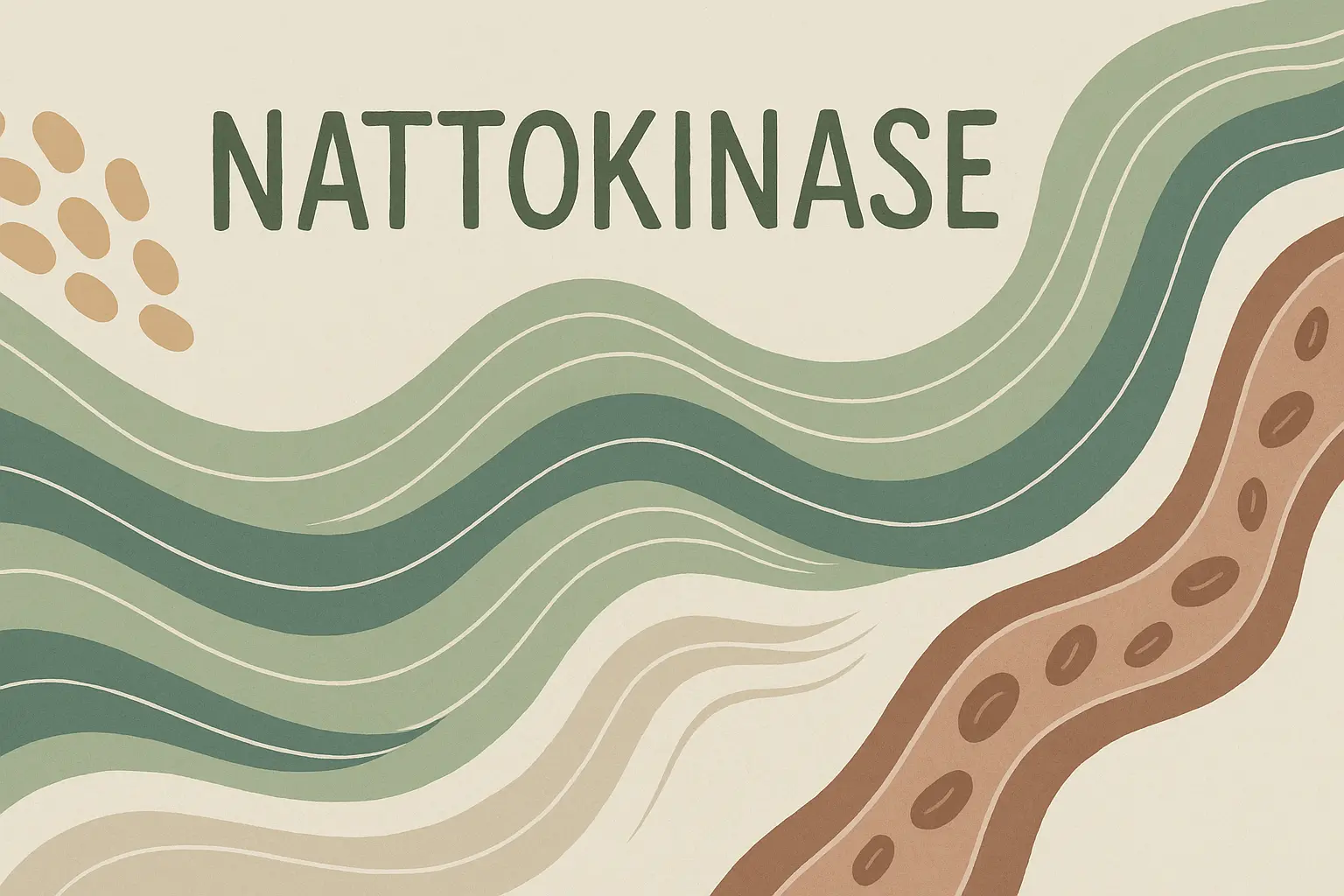TL;DR
- Compare fibrinolytic units (FU) per serving (not just mg).
- Require independent testing + ISO 22000 / FSSC 22000 (or cGMP, where applicable).
- Check assay method, stability data, K2 status, allergens, and label transparency.
What is Nattokinase—and why does “FU” matter?
Nattokinase is a protease produced by Bacillus subtilis during soybean fermentation. Potency should be stated asfibrinolytic activity (FU) plus the assay method (e.g., fibrin plate or chromogenic activity), because FU is method-dependent; quality also relies on standardization, stability, and testing data, not FU alone.
.Typical finished products: ~1,000–4,000 FU per serving.
.Ingredient standardizations can be much higher (e.g., up to 60,000 FU/g at the raw-material level), then formulated down to your target FU per capsule.
Supplier example (for auditors): Some ISO/FSSC-certified ingredients (e.g., nattiase®-grade NK) publish FU/g with validated assays and stability controls—useful for QA review without over-branding consumer labels.
The 10-Point Label & Spec Checklist (Consumer + B2B)
- FU clearly stated
Prefer “X,000 FU per serving.” Avoid mg-only claims.
- Assay method disclosed
e.g., fibrin plate or chromogenic method on the CoA.
- Standardization
Clear spec such as “≥20,000 FU/g (bulk)” or “2,000 FU/capsule (finished).”
- Manufacturing quality
Food/biotech: ISO 22000 and/or FSSC 22000; dietary supplement markets may also accept cGMP. Ask for current certificates.
- Purity & contaminants
CoA covering microbial limits, heavy metals, and residual solvents/pesticides where relevant.
- Vitamin K2 status
If K2 control matters, look for K2-reduced/removed confirmation (spec or CoA).
- Allergen & origin
Soy status, vegan/vegetarian, non-GMO, country of origin.
- Formulation & delivery
Enteric/acid-resistant capsules help protect activity; avoid unnecessary excipients.
- Stability & shelf life
Real-time/accelerated data; target activity at end of shelf life (not just at manufacture).
- Evidence & claims discipline
Cite peer-reviewed data appropriately; avoid disease claims on consumer labels.
How to Read an NK Label (Quick Examples)
.Good: “Nattokinase, standardized to 2,000 FU per capsule; assay: fibrin plate; vegan; K2-reduced; manufactured in ISO 22000 / FSSC 22000 facility.”
.Needs follow-up: “Nattokinase 200 mg”—no FU, no method, no quality marks.
Formulation Choices That Actually Matter
.FU per serving is the #1 lever for efficacy comparisons.
.Enteric/acid-resistant capsules improve enzyme survival through the stomach.
.Single vs. blends – Blends are fine if the actual NK FU remains at your target dose.
.Excipients – Prefer clean-label formulations.
Safety & Responsible Use
Nattokinase influences fibrinolysis. If you use anticoagulants/antiplatelets, have a bleeding disorder, are pregnant, or have surgery scheduled, consult a qualified professional. Follow label directions.
Red Flags (Skip These)
.No FU (mg-only).
.No independent testing or ISO 22000 / FSSC 22000 / cGMP evidence.
.“Proprietary enzyme complex” without per-enzyme activities.
.Reused/identical CoAs across lots.
.Overreaching cures/claims.
For B2B Buyers & Purchasing Teams: Spec Shortlist
1) Technical + Regulatory Pack
.FU/g specification (ingredient level), assay method (fibrin plate/chromogenic), system suitability & acceptance criteria.
.Source organism and high-level fermentation info; country of origin (e.g., Taiwan).
.Allergen/vegan/GMO statements; HS code.
.Stability (real-time/accelerated), shelf life, packaging (e.g., alu-bag in drum, nitrogen flush), storage conditions.
.Potency options: availability of higher standardizations up to 60,000 FU/g for flexible formulations.
.Single vs. blends – Blends are fine if the actual NK FU remains at your target dose.
.Excipients – Prefer clean-label formulations.
2) Quality Certificates
.ISO 22000 and/or FSSC 22000 (food safety systems.
.cGMP where jurisdiction/brand policy requires it.
.Most recent audit dates.


